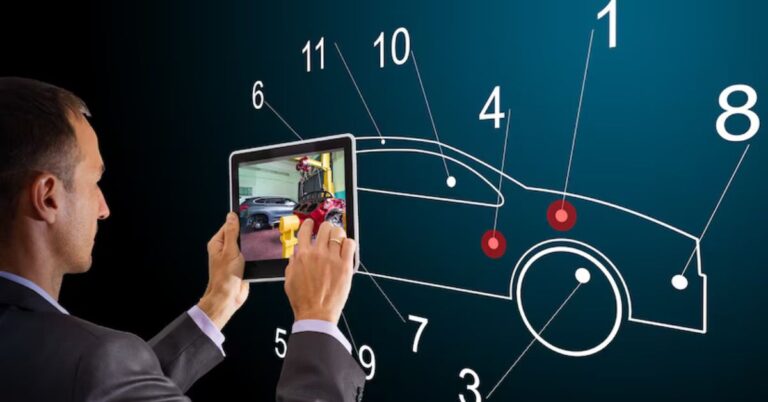Are you curious about the secret language your vehicle speaks? Dive into the world of MFR Body Codes – the unique identifiers that hold the key to unlocking a wealth of information about your car! Join us on an exciting journey as we unravel the mysteries behind these codes and learn how they can help you better understand and care for your beloved ride. Let’s embark on this adventure together!
What is a MFR Body Code?
A MFR Body Code is like a special fingerprint that distinguishes one vehicle from another. It’s a unique combination of letters and numbers assigned by the manufacturer, providing essential details about the car’s body style and features. Think of it as your vehicle’s personal ID card – compact yet packed with vital information.
These codes are more than just random strings of characters; they offer insights into the specific design elements and specifications of your car. From identifying the type of chassis to detailing key options or packages installed during production, MFR Body Codes serve as an invaluable resource for both owners and professionals in the automotive industry.
Understanding these codes can empower you to make informed decisions regarding maintenance, repairs, upgrades, or even when shopping for parts or accessories tailored to your vehicle’s exact specifications. So next time you come across those mysterious alphanumeric sequences on your car, remember that they hold valuable clues waiting to be deciphered!
Why is it Important to Know Your Vehicle’s MFR Body Code?
Understanding your vehicle’s MFR Body Code is crucial for various reasons. It provides valuable information about the specific body style and design of your car, aiding in accurate repairs and maintenance. Knowing the MFR Body Code can help you easily identify compatible parts when upgrading or customizing your vehicle. Additionally, being aware of this code ensures that any insurance claims or service appointments are handled efficiently since it streamlines communication with mechanics and insurers.
Moreover, having knowledge of your vehicle’s MFR Body Code can enhance resale value by demonstrating to potential buyers that you have taken good care of your car and understand its specifications. Furthermore, in case of recalls or safety issues related to a specific body type, being informed about the MFR Body Code enables you to stay informed and take necessary actions promptly. Understanding your vehicle’s MFR Body Code empowers you as a responsible car owner and enhances the overall driving experience.
How to Locate Your Vehicle’s MFR Body Code
When it comes to locating your vehicle’s MFR Body Code, the process can vary depending on the make and model of your car. One common place to find this code is on a sticker or plate located in the driver’s side door jamb. This label typically contains information such as the VIN number, tire pressure recommendations, and sometimes even the MFR Body Code.
If you don’t see it there, another location to check is under the hood near the radiator support. Manufacturers often stamp or engrave important codes like this in easily accessible areas for service technicians.
In some cases, you may need to refer to your owner’s manual or contact the manufacturer directly for assistance in finding your specific vehicle’s MFR Body Code. Remember that accurate identification of this code is crucial for ordering correct parts and accessories for your car maintenance needs.
The Different Types of MFR Body Codes
When it comes to MFR Body Codes, there are several types that represent different aspects of a vehicle’s design and specifications.
One common type is the “WMI” code, which stands for World Manufacturer Identifier. This code identifies the manufacturer of the vehicle.
Another type is the “VDS” code, short for Vehicle Descriptor Section. The VDS provides information on the model and equipment level of the vehicle.
The “VIS” code, or Vehicle Indicator Section, is yet another type that specifies details like body style and engine type.
Additionally, some vehicles may have a unique “MVS” code denoting specific modifications or customizations made by the manufacturer.
Understanding these various types of MFR Body Codes can help you decode your vehicle’s build specifics more accurately and efficiently.
Benefits of Knowing Your Vehicle’s MFR Body Code
Knowing your vehicle’s MFR Body Code comes with a range of benefits. Having this information at hand can help you when it comes to ordering parts or accessories for your car. By knowing the specific body code, you ensure that any replacements or upgrades are compatible and fit perfectly.
Understanding your MFR Body Code can assist you in carrying out maintenance tasks more efficiently. Whether it’s changing fluids, performing minor repairs, or conducting routine inspections, knowing your body code helps streamline the process and avoid confusion.
Moreover, being aware of your vehicle’s MFR Body Code may also prove beneficial when communicating with mechanics or automotive professionals. It enables clearer communication about your car’s specifications and requirements, leading to better service and accurate solutions tailored to your specific model.
Familiarizing yourself with your vehicle’s MFR Body Code empowers you as a car owner and enhances the overall maintenance and care of your beloved ride.
Common Misconceptions about MFR Body Codes
Misconceptions about MFR Body Codes often stem from a lack of understanding. One common misunderstanding is that the MFR Body Code only pertains to the vehicle’s exterior design, when in reality, it encompasses various components like chassis and frame specifications. Another misconception is that knowing the MFR Body Code is only essential for mechanics or car enthusiasts. However, all vehicle owners can benefit from this information as it aids in identifying compatible parts and ensuring proper maintenance.
Some may wrongly assume that deciphering the MFR Body Code requires specialized knowledge or tools. In truth, locating this code usually involves checking specific areas in your vehicle’s documentation or physically inspecting certain parts of the car. Additionally, there might be confusion surrounding whether older vehicles have relevant MFR Body Codes. Despite advancements in technology, older models still carry these codes which are crucial for accurate identification and repairs.
Conclusion
As we wrap up our discussion on MFR Body Codes, it’s clear that understanding this aspect of your vehicle is pivotal. By knowing your vehicle’s MFR Body Code, you gain valuable insights into its specific make and model details. This knowledge can help you when ordering parts or performing maintenance tasks.
Being aware of the different types of MFR Body Codes allows for better communication with mechanics and dealerships. It streamlines processes and ensures accurate information exchange regarding your vehicle. Furthermore, debunking common misconceptions around MFR Body Codes empowers you to navigate discussions about your car confidently.
Remember, the benefits of knowing your vehicle’s MFR Body Code extend beyond just technicalities; they provide a deeper connection to your automobile. So next time you see those alphanumeric characters on your car, you’ll have a newfound appreciation for their significance in understanding and caring for your vehicle effectively.
FAQS
Q: Can I determine my vehicle’s MFR Body Code online?
Yes, many online resources and databases can help you locate your vehicle’s MFR Body Code. You can also refer to your vehicle’s owner’s manual for this information.
Q: How often should I check my vehicle’s MFR Body Code?
It is recommended to check your vehicle’s MFR Body Code whenever you are performing maintenance or repairs on your car. This code is essential for ensuring that you are using the correct parts and accessories.
Q: Are all vehicles required to have an MFR Body Code?
Not all vehicles have an explicit body code designated by the manufacturer, but most modern cars do come with a unique identifier that specifies the body type and characteristics of the vehicle.
Knowing your vehicle’s MFR Body Code is crucial for maintaining and servicing your car effectively. By understanding how to locate this code, its importance, types, benefits, and dispelling common misconceptions surrounding it, you will be better equipped to keep your vehicle in top condition. Stay informed about your car’s specifications and make use of the provided resources to ensure optimal performance and longevity for your beloved ride.

